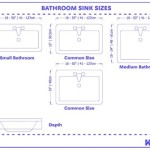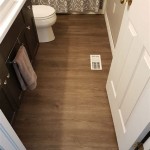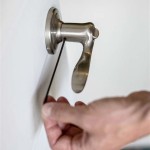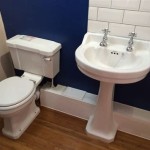How Much Does It Cost To Replace The Bathroom Floor?
Replacing a bathroom floor is a common home improvement project, often undertaken to update the aesthetics, address water damage, or improve functionality. Understanding the costs associated with this project is crucial for budgeting purposes and ensuring a smooth renovation process. Several factors influence the final price, including the type of flooring material selected, the size of the bathroom, the complexity of the installation, and the geographical location.
This article aims to provide a comprehensive overview of the costs involved in replacing a bathroom floor, breaking down the various components and offering insights into how to estimate the expense accurately. Furthermore, it will examine the different flooring options available and their respective price points, as well as discuss labor costs and potential hidden expenses that homeowners should be aware of before embarking on this project.
Key Cost Factors Influencing Bathroom Floor Replacement
The total cost of replacing a bathroom floor can vary significantly based on several key factors. These factors should be carefully considered when planning a bathroom renovation to avoid unexpected expenses and ensure the project stays within budget.
1. Flooring Material: The choice of flooring material is the most significant factor affecting the overall cost. Different materials have vastly different price points, ranging from budget-friendly options like vinyl to more expensive choices like ceramic tile or natural stone. The material's durability, water resistance, and aesthetic appeal also contribute to its cost. Installation complexity can also increase the price, especially with more intricate materials like mosaic tile. Below is a breakdown of common bathroom flooring materials and their average cost per square foot:
- Vinyl: Vinyl flooring is one of the most affordable options, typically ranging from $2 to $7 per square foot. It is water-resistant, durable, and easy to install, making it a popular choice for budget-conscious homeowners.
- Laminate: Laminate flooring offers a wood-like appearance at a lower cost than hardwood. It generally costs between $3 and $11 per square foot. While water-resistant, it is not entirely waterproof, so it's crucial to choose a high-quality laminate specifically designed for bathrooms.
- Ceramic Tile: Ceramic tile is a versatile and durable option that costs between $5 and $15 per square foot. It is waterproof and comes in a wide variety of styles, colors, and sizes. Installation can be more complex than vinyl or laminate, potentially increasing labor costs.
- Porcelain Tile: Porcelain tile is similar to ceramic tile but is denser and more water-resistant. It typically costs between $6 and $20 per square foot. Its superior durability and water resistance make it an excellent choice for bathrooms, but it can be more challenging to install.
- Natural Stone: Natural stone, such as marble, granite, and slate, offers a luxurious and high-end look. However, it is also the most expensive option, ranging from $10 to $50 per square foot. Installation requires specialized skills and can be costly. Natural stone also requires regular maintenance to prevent staining and water damage.
- Engineered Wood: Engineered wood is a good alternative to solid hardwood that is more resistant to moisture. It costs from $6 to $15 per square foot on average.
2. Bathroom Size: The size of the bathroom directly impacts the amount of material needed and the labor hours required. A larger bathroom will naturally require more flooring material, increasing the material cost. Similarly, the installation process will take longer in a larger space, leading to higher labor costs. Measuring the bathroom accurately and calculating the square footage is essential for obtaining an accurate estimate.
3. Labor Costs: Labor costs can vary significantly depending on the contractor's experience, the complexity of the installation, and the geographical location. Simple installations, such as laying vinyl flooring, will typically have lower labor costs than more complex installations, such as laying intricate mosaic tile. The average labor cost for installing bathroom flooring can range from $4 to $10 per square foot. It is crucial to obtain multiple quotes from different contractors to compare prices and ensure fair rates.
4. Subfloor Preparation: The condition of the subfloor plays a crucial role in the success and longevity of the new flooring. If the existing subfloor is damaged, uneven, or unstable, it will need to be repaired or replaced before the new flooring can be installed. Subfloor preparation can add significantly to the overall cost of the project, depending on the extent of the damage. Common subfloor issues include water damage, rot, and uneven surfaces. Repairing or replacing the subfloor may involve patching holes, leveling the surface, or replacing entire sections of the subfloor. The cost of subfloor preparation can range from $1 to $5 per square foot, depending on the complexity of the repair.
5. Removal of Old Flooring: The cost of removing the existing flooring can also impact the overall project budget. The difficulty of removing the old flooring will depend on the type of material and how it was installed. Some materials, such as vinyl or laminate, are relatively easy to remove, while others, such as tile or stone, can be more challenging and time-consuming. The cost of removing old flooring can range from $1 to $3 per square foot.
6. Geographical Location: Material and labor costs can vary significantly depending on the geographical location. Areas with a higher cost of living typically have higher labor rates and material prices. Obtaining quotes from local contractors is essential to get an accurate estimate for the project in a specific area.
7. Additional Features and Upgrades: Certain additional features and upgrades can also increase the cost of replacing a bathroom floor. Heated flooring is a popular upgrade that provides added comfort and luxury. The cost of installing heated flooring can range from $8 to $20 per square foot, including materials and labor. Other potential upgrades include installing new baseboards, adding a waterproofing membrane, or upgrading the toilet flange. Each of these upgrades will add to the overall cost of the project.
Estimating the Cost of Different Flooring Materials
To provide a clearer understanding of the costs associated with different flooring materials, it's helpful to look at examples of the estimated cost for a standard-sized bathroom (approximately 5' x 8', or 40 square feet). These estimates include both the material cost and the average labor cost of $6 per square foot.
Vinyl Flooring:
- Material Cost: $2 - $7 per square foot
- Total Material Cost (40 sq ft): $80 - $280
- Labor Cost (40 sq ft at $6/sq ft): $240
- Estimated Total Cost: $320 - $520
Laminate Flooring:
- Material Cost: $3 - $11 per square foot
- Total Material Cost (40 sq ft): $120 - $440
- Labor Cost (40 sq ft at $6/sq ft): $240
- Estimated Total Cost: $360 - $680
Ceramic Tile:
- Material Cost: $5 - $15 per square foot
- Total Material Cost (40 sq ft): $200 - $600
- Labor Cost (40 sq ft at $6/sq ft): $240
- Estimated Total Cost: $440 - $840
Porcelain Tile:
- Material Cost: $6 - $20 per square foot
- Total Material Cost (40 sq ft): $240 - $800
- Labor Cost (40 sq ft at $6/sq ft): $240
- Estimated Total Cost: $480 - $1040
Natural Stone:
- Material Cost: $10 - $50 per square foot
- Total Material Cost (40 sq ft): $400 - $2000
- Labor Cost (40 sq ft at $6/sq ft): $240
- Estimated Total Cost: $640 - $2240
It's important to note that these are just estimates, and the actual cost may vary depending on the specific factors mentioned earlier. Obtaining multiple quotes from different contractors and carefully considering the specific requirements of the project is crucial for accurate budgeting.
Hidden Costs and Budgeting Tips
In addition to the main cost factors outlined above, there are several potential hidden costs that homeowners should be aware of when budgeting for a bathroom floor replacement project. These hidden costs can add up quickly and significantly impact the overall project budget.
1. Unexpected Repairs: During the demolition process, unexpected problems may be uncovered, such as hidden water damage, mold growth, or structural issues. Addressing these issues can require additional repairs and increase the overall project cost. It is advisable to set aside a contingency fund of 10-15% of the estimated project cost to cover unexpected repairs.
2. Plumbing Adjustments: Replacing the bathroom floor may require adjusting plumbing fixtures, such as the toilet or vanity. These adjustments can involve additional plumbing work and increase the overall cost of the project. It is important to discuss plumbing adjustments with the contractor beforehand to get an accurate estimate of the potential costs.
3. Disposal Fees: Disposing of the old flooring and any debris generated during the project can incur disposal fees. These fees can vary depending on the location and the amount of waste. It is important to factor in disposal fees when budgeting for the project. Some contractors may include disposal fees in their overall quote, while others may charge them separately.
4. Tool and Equipment Rental: If undertaking the project as a DIY endeavor, it may be necessary to rent specialized tools and equipment, such as tile saws, grout floats, or leveling tools. These rental fees can add to the overall cost of the project. Weighing the cost of renting tools against the cost of hiring a professional contractor is crucial.
5. Permitting Fees: Depending on the location and the scope of the project, it may be necessary to obtain permits from the local building department. Permitting fees can vary depending on the type of work being done and the value of the project. It is important to check with the local building department to determine whether permits are required and to factor in permitting fees when budgeting for the project.
Budgeting Tips:
- Obtain Multiple Quotes: Get at least three quotes from different contractors to compare prices and services.
- Be Specific: Provide contractors with detailed information about the project, including the desired flooring material, the size of the bathroom, and any specific requirements.
- Read Reviews: Check online reviews and ask for references to ensure you are hiring a reputable and qualified contractor.
- Review the Contract Carefully: Before signing a contract, carefully review all the terms and conditions, including the payment schedule, the scope of work, and any warranties.
- Set a Contingency Fund: Allocate a contingency fund to cover unexpected repairs or additional costs.
By carefully considering all the potential costs and following these budgeting tips, homeowners can effectively plan and budget for a bathroom floor replacement project, ensuring a smooth and successful renovation process.
Fixr Com Floor Repair Cost Sagging
Fixr Com Floor Replacement Cost To Refloor A House
Fixr Com Floor Replacement Cost To Refloor A House
Fixr Com Subfloor Replacement Cost S
Fixr Com Subfloor Replacement Cost S
Fixr Com Subfloor Replacement Cost S
How Much Does It Cost To Retile A Bathroom In 2024
Fixr Com Floor Replacement Cost To Refloor A House
How Much Does It Cost To Replace Subfloor 2024
How Much Does It Cost To Retile A Shower 2024
Related Posts







